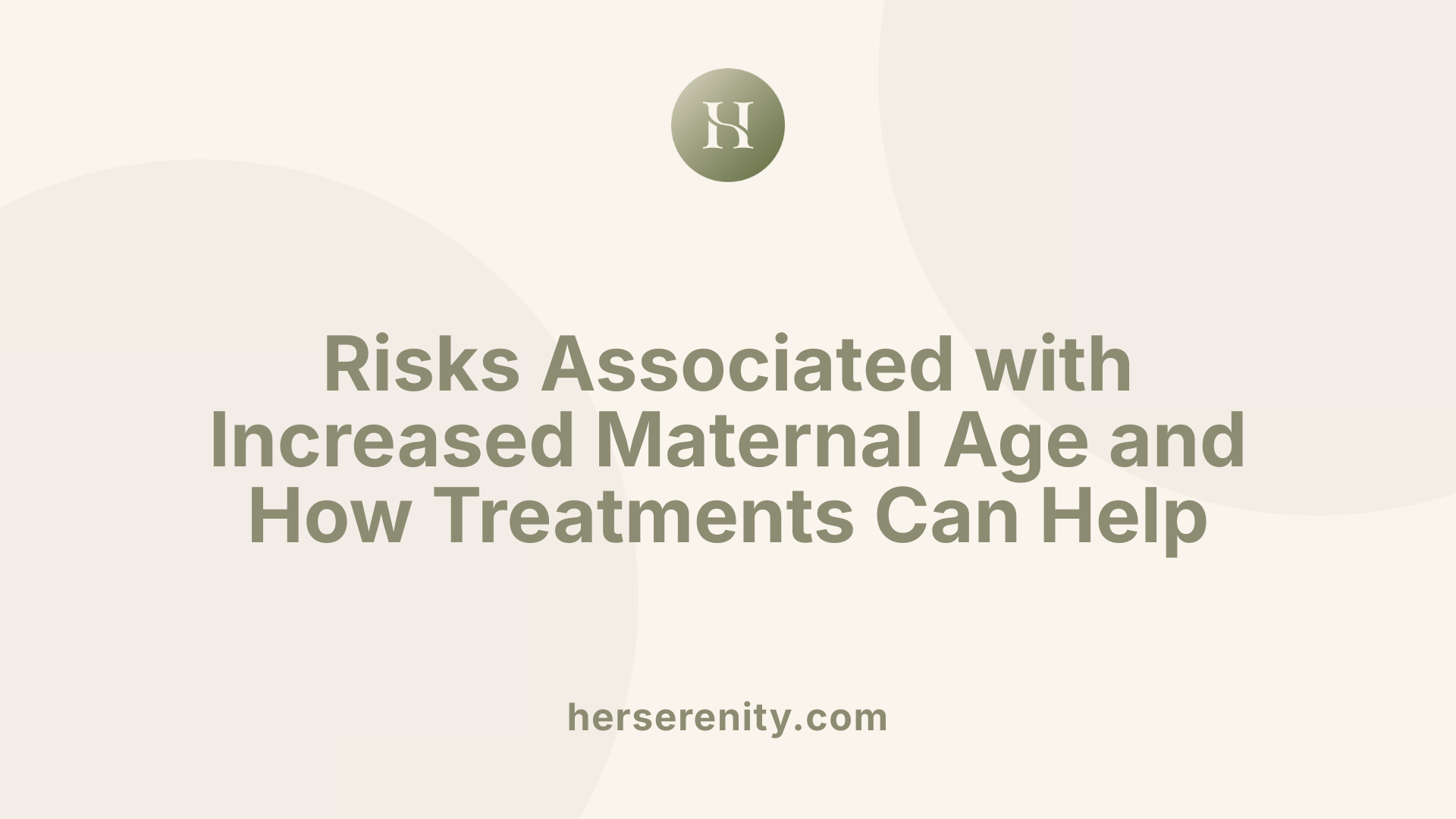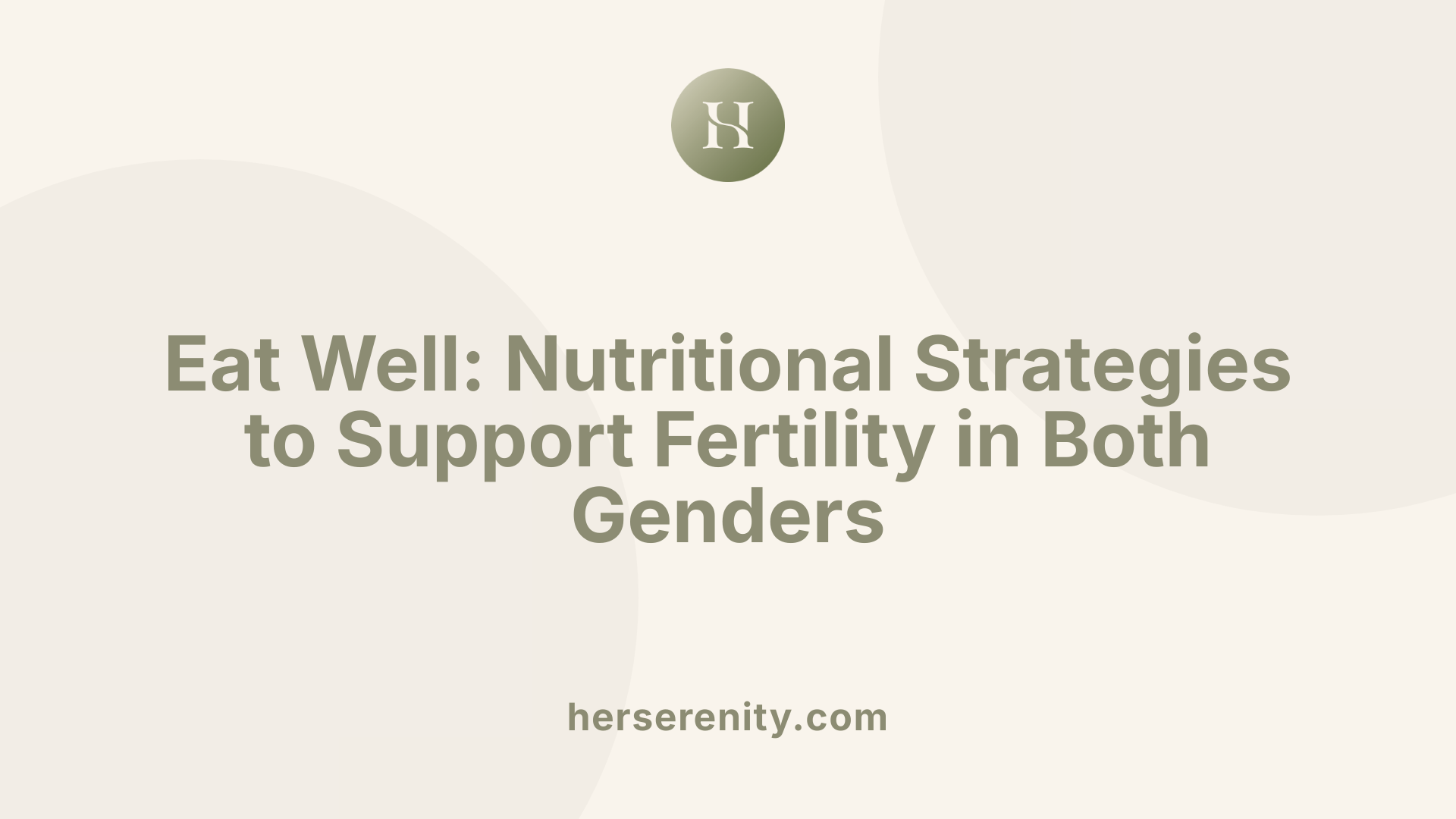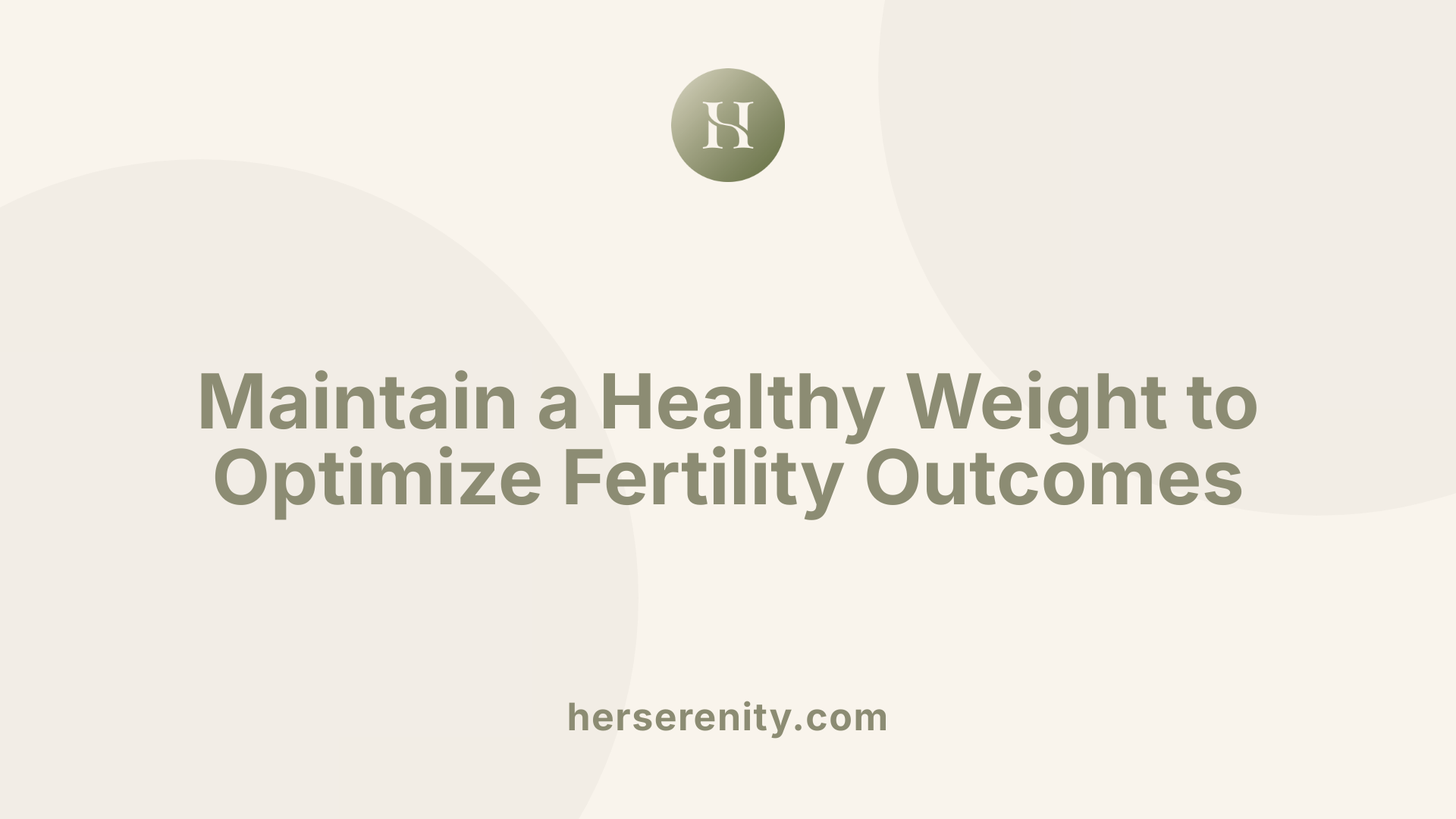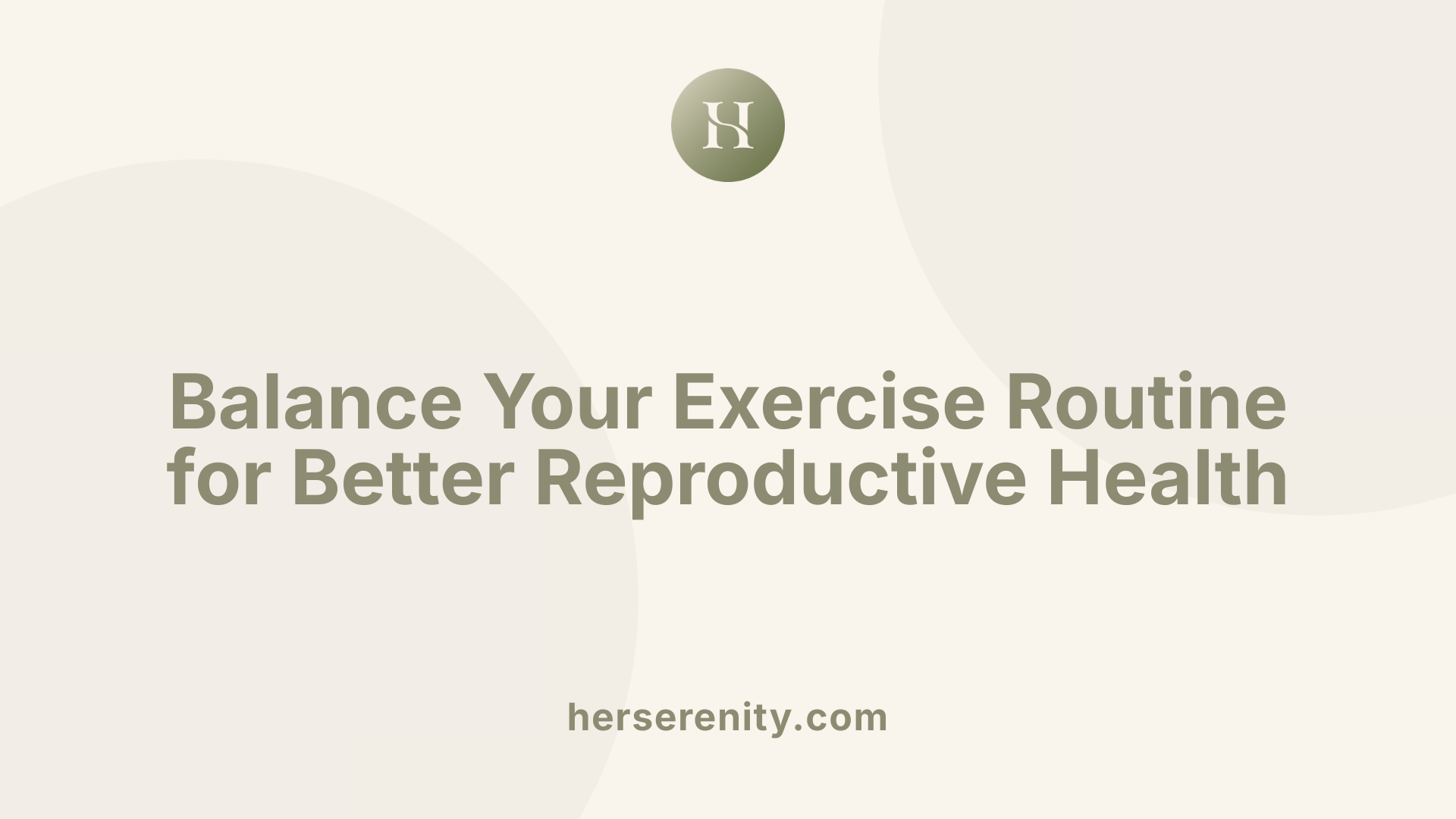Understanding How Lifestyle and Diet Influence Fertility Over Time
Fertility is a complex interplay of biological, environmental, and behavioral factors that determine the ability to conceive and carry a pregnancy to term. While medical advances provide powerful tools to assist conception, the foundation of reproductive health lies significantly in lifestyle and dietary choices. This article explores how age, diet, weight, exercise, and environmental influences shape the fertility timeline for both men and women, highlighting the importance of optimized nutrition and healthy habits to maximize reproductive potential.
The Natural Decline of Fertility With Age

How does age impact male fertility?
Male fertility begins to decline gradually starting around age 35. This decline involves reductions in semen quality, including sperm count, motility, and increased DNA fragmentation, which can impair the ability to conceive. Although men remain fertile later in life compared to women, advancing age still affects reproductive potential and may contribute to increased risks in offspring.
How does age affect female fertility?
Women experience a more pronounced decline in fertility beginning after age 30, with a significant drop after age 35. This decline results partly from a decrease in the quantity and quality of oocytes (eggs) within the ovaries. By the late 30s and early 40s, chances of natural conception decrease markedly, along with diminished ovarian reserve and hormonal changes.
What are the age-related pregnancy risks?
Pregnancy risks increase with maternal age, including a higher likelihood of aneuploidy (chromosomal abnormalities), miscarriage, and complications during pregnancy and delivery. These risks are directly linked to the aging of eggs and changes in reproductive physiology.
Medical treatments for infertility frequently target these age-related declines in ovarian function and semen quality to improve the chances of conception. Assisted reproductive technologies (ART) like IVF aim to overcome the challenges posed by diminished gamete quality and quantity, thereby addressing the primary age-related causes of infertility.
Diet's Influence on Male and Female Reproductive Health

How do fruits and vegetables affect fertility?
Fruits and vegetables are essential components of a fertility-enhancing diet. Rich in vitamins, minerals, and antioxidants, they support sperm production in men and ovulatory function in women. Their high nutrient content helps improve semen quality and overall reproductive health.
What role do antioxidants play in reproductive health?
Antioxidants help reduce oxidative stress, which can damage sperm and affect female fertility. In men, supplements like vitamin E, vitamin C, β-carotene, and coenzyme Q10 may improve sperm parameters, although the exact effective doses are unclear. However, antioxidant supplementation has not shown significant benefits in women undergoing infertility treatments.
How do healthy dietary patterns influence fertility?
Adherence to healthy diets featuring whole grains, legumes, fruits, vegetables, and seafood is linked to better fertility outcomes in both genders. Such dietary patterns balance blood sugar and regulate hormones, supporting conception and healthy pregnancy. Maintaining a balanced weight through nutrition and regular exercise further enhances fertility potential.
What impact does the Mediterranean diet have on reproductive health?
The Mediterranean diet—a plant-based eating pattern with olive oil, moderate fish, poultry, whole grains, fruits, and vegetables—positively correlates with improved fertility. It is associated with reduced pregnancy loss during infertility treatments and better reproductive outcomes, likely due to its anti-inflammatory and nutrient-rich profile.
How do trans fats and processed foods affect fertility?
Diets high in trans fats, processed foods, refined carbohydrates, and added sugars can impair female fertility by disrupting ovulatory function and increasing infertility risk. In men, these unhealthy fats may decrease semen quality. Choosing unsaturated fats and minimally processed foods supports better reproductive health.
These dietary considerations highlight the strong link between nutrition and reproductive health in both men and women, emphasizing the benefits of consuming nutrient-dense, antioxidant-rich foods and following healthy eating patterns like the Mediterranean diet for optimal fertility.
The Role of Weight Management in Fertility Outcomes

How does obesity affect male fertility?
Obesity in men is linked to alterations in hormone levels, reduced sperm count, and impaired sperm motility. These factors can decrease overall semen quality, affecting the chances of conception. While male obesity has a somewhat lesser impact on natural fertility compared to females, it may adversely influence outcomes in assisted reproductive technologies like intracytoplasmic sperm injection (ICSI).
How does obesity affect female fertility?
In women, obesity is significantly associated with reduced fertility. Overweight and obese women often experience increased time to conception and face lower success rates when undergoing in vitro fertilization (IVF). Obesity can also increase the risk of miscarriage and decrease implantation success, making weight management a crucial component of reproductive health.
What is the impact of being underweight on fertility?
Underweight women (those with a body mass index below 20 kg/m²) also encounter fertility challenges. Insufficient body weight can disrupt hormonal balance and ovulatory function, leading to difficulties conceiving. Maintaining a healthy weight is important to support regular ovulation and reproductive capacity.
Can weight loss improve fertility?
Weight loss through a combination of healthy diet and exercise has been shown to improve fertility outcomes, especially in overweight or obese women. Reducing excess weight can restore hormonal balance, improve ovulatory function, and enhance the chances of pregnancy, both naturally and with fertility treatments. In men, weight loss may help improve sperm DNA integrity and optimize reproductive potential.
In summary, maintaining a healthy weight through balanced nutrition and physical activity is vital for both men and women aiming to optimize fertility. Addressing weight-related factors is an effective and modifiable strategy to improve reproductive outcomes.
Exercise and Its Complex Relationship With Fertility

How does moderate exercise benefit fertility?
Moderate exercise is generally beneficial for reproductive health and can help reduce the risk of infertility. Engaging in regular, moderate physical activity helps maintain a healthy body weight, improves hormonal balance, and promotes better ovulatory function in women. For men, moderate exercise supports overall sperm quality by enhancing cardiovascular health and reducing oxidative stress, which may improve sperm motility and morphology.
What are the risks of excessive exercise?
While moderate exercise is helpful, excessive or exhausting physical activity can negatively affect fertility, especially in women. Overtraining or very intense exercise routines may disrupt the menstrual cycle, leading to irregular or absent ovulation. This is often due to increased stress hormone levels and energy deficits that impair reproductive hormone signaling.
Are there differences between men and women in exercise's impact on fertility?
Exercise influences fertility differently by gender. Women are more vulnerable to fertility disturbances from excessive exercise due to its effects on menstrual regularity and ovarian function. Conversely, men seem less affected by high exercise volumes regarding fertility, but extreme endurance sports may still reduce sperm concentration or quality. Overall, balance is crucial; maintaining moderate activity levels benefits both men and women aiming to conceive.
Psychological Stress: Impact and Management in Fertility
How Does Psychological Stress Affect Male and Female Fertility?
Psychological stress can have a measurable negative impact on fertility for both men and women. In men, high stress levels are linked to reduced sperm parameters, including lower sperm count and decreased motility. These changes can diminish the chances of conception.
For women, stress has been observed to prolong the time needed to conceive. Although moderate stress might not critically impair fertility, sustained or intense psychological stress can disrupt ovulatory function and hormonal balance, further hindering reproductive success.
What Stress Reduction Techniques Can Improve Fertility Outcomes?
Managing stress effectively can improve fertility prospects. Stress reduction methods include cognitive behavioral therapy (CBT), yoga, meditation, and other relaxation techniques. These approaches can help lower stress hormones, improve mood, and enhance overall reproductive health.
Particularly for women undergoing fertility treatments such as in vitro fertilization (IVF), incorporating stress management strategies has been associated with greater emotional well-being and potentially better treatment outcomes. Support systems, including counseling and peer support groups, also play a vital role in reducing stress during fertility challenges.
Focusing on psychological wellness, combined with a healthy lifestyle, can create an environment that fosters improved fertility for both partners.
The Impact of Substance Use on Fertility
How does cigarette smoking affect fertility?
Cigarette smoking is a major factor that significantly reduces fertility in both men and women. In women, smoking accelerates the depletion of ovarian reserve, leads to decreased ovarian response during fertility treatments, and increases pregnancy complications such as miscarriage. For men, smoking negatively impacts sperm quality by lowering sperm count, motility, and increasing DNA damage. Importantly, cessation of smoking can improve fertility outcomes, highlighting the reversible nature of these effects when quitting early enough.
What is the effect of recreational drugs on reproductive health?
Use of recreational drugs such as marijuana, cocaine, and heroin adversely affects fertility. In men, marijuana use has been linked to reduced sperm counts and impaired sperm motility, while cocaine and heroin can further damage sperm quality. For women, recreational drug use may disrupt hormonal balance and ovulatory function, although evidence on how it affects time to conception remains inconclusive. Overall, substance use imposes a risk on both spermatogenesis and ovulation.
How does alcohol consumption influence fertility?
Alcohol intake impacts fertility depending on the amount consumed. High alcohol consumption, specifically more than 10 drinks per week, is associated with an increased risk of infertility in women. Moderate to low alcohol intake shows mixed effects, but generally, it is recommended to minimize alcohol consumption during attempts to conceive. In men, excessive alcohol impairs sperm quality and hormonal balance, contributing to lower fertility.
How do these substances affect sperm quality and ovarian reserve?
The combined influences of cigarette smoking, recreational drugs, and excessive alcohol intake manifest in lower sperm quality characterized by reduced sperm count, poor motility, abnormal morphology, and increased DNA fragmentation. Similarly, in women, these substances accelerate ovarian aging and reduce ovarian reserve, leading to decreased chances of conception and higher miscarriage risk. Stress-reduction and avoidance of these substances improve reproductive function, underscoring the importance of lifestyle modifications for optimal fertility.
Environmental Exposures That Impair Reproductive Functions
How Does Air Pollution Affect Fertility?
Air pollution is linked to reduced fecundability and adverse fertility outcomes in both men and women. Pollutants such as particulate matter and nitrogen oxides can disrupt hormonal balance and impair sperm quality and ovulatory function, thereby lowering the chances of conception.
What Role Do Heavy Metals Play in Reproductive Health?
Exposure to heavy metals such as lead and mercury adversely impacts fertility. These metals accumulate in the body and can cause toxic effects on the reproductive organs, impairing spermatogenesis in men and ovarian function in women. Higher exposure levels are associated with increased rates of miscarriage and difficulty conceiving.
How Do Endocrine Disruptors Influence Fertility?
Endocrine-disrupting chemicals (EDCs), including bisphenol A (BPA), pesticides, and phthalates, interfere with hormone regulation essential for reproduction. EDC exposure is linked to diminished sperm quality, disturbances in menstrual cycles, and reduced ovarian reserve, which collectively contribute to infertility.
Are Radiation and Electromagnetic Waves Harmful for Fertility?
Radiation exposure, whether from medical imaging or environmental sources, can cause DNA damage affecting sperm and eggs. Additionally, electromagnetic waves emitted by cell phones have been suggested to impair sperm motility and integrity, although evidence varies. Avoiding excessive and prolonged exposure is advisable for those seeking to conceive.
These environmental exposures collectively pose significant risks to reproductive functions. Awareness and minimization of contact with air pollution, heavy metals, endocrine disruptors, and unnecessary radiation can help protect fertility in both men and women.
Medications That May Affect Fertility and Their Management
How Do Anabolic Steroids Impact Fertility?
Anabolic steroids can significantly impair male fertility by disrupting normal spermatogenesis. These substances suppress the body’s natural production of testosterone, leading to reduced sperm count and quality. In some cases, prolonged steroid use can cause infertility, although these effects may be reversible upon cessation.
What Is the Effect of Antibiotics and Antiepileptics on Reproductive Health?
Certain antibiotics and antiepileptic medications can also negatively influence fertility in both men and women. For men, some antibiotics may impair sperm motility and morphology, while antiepileptics can alter hormonal balance affecting ovulatory function in women. Not all antibiotics or antiepileptics have these effects; the impact varies with the specific drug and treatment duration.
Are These Fertility Impairments Reversible?
Fortunately, fertility impairments caused by these medications are often reversible. Discontinuing anabolic steroids typically leads to a gradual restoration of sperm production, although it may take several months. Similarly, adjusting or switching antibiotics and antiepileptic medications under medical supervision can improve reproductive function. Close collaboration with healthcare providers ensures appropriate management and optimization of fertility while addressing underlying medical conditions.
The Importance of Preventative Health in Fertility Preservation
How do contraceptive use and regular medical check-ups contribute to fertility preservation?
Preventative health plays a crucial role in maintaining and preserving fertility. Regular medical check-ups allow healthcare providers to monitor reproductive health, identify potential problems early, and manage any existing conditions that could impair fertility. These routine visits enable timely interventions that may prevent long-term fertility damage.
Contraceptive use is also a vital aspect of fertility preservation. Beyond their primary role in family planning, contraceptives can help regulate menstrual cycles, reduce the risk of pelvic inflammatory disease, and manage hormonal imbalances that may affect ovulatory function. Thoughtful use of contraceptives, guided by medical advice, supports reproductive system health and can protect fertility over time.
What role does screening play in identifying fertility issues?
Screening tests are essential for detecting underlying fertility problems before couples attempt to conceive. For women, this may include hormonal assessments, ovarian reserves, and evaluations for conditions such as polycystic ovary syndrome (PCOS) or endometriosis. For men, screening often involves semen analysis to assess sperm count, motility, and morphology.
Early identification through screening facilitates prompt management of reproductive health concerns, improving the chance of successful conception and pregnancy. It also offers couples valuable information to make informed decisions about timing and fertility treatments if needed.
Overall, integrating contraceptive strategies, regular medical evaluations, and thorough screening into preventative health approaches significantly enhances fertility preservation efforts. These practices help maintain reproductive function, reduce risk factors, and support healthier outcomes for individuals planning pregnancy.
Lifestyle and Other Modifiable Factors Influencing Male Fertility
How Do Clothing Choices Affect Male Fertility?
Tight clothing that increases scrotal temperature can negatively impact sperm quality. The scrotum's main function is to keep testes cooler than body temperature, which is critical for optimal sperm production. Wearing loose-fitting underwear and pants helps maintain a cooler scrotal environment, supporting better sperm motility and count.
What Is the Role of Scrotal Temperature on Sperm Health?
Elevated scrotal temperature from sources such as tight clothing or prolonged sitting may impair spermatogenesis. Research indicates that increased scrotal heat reduces sperm concentration and increases DNA damage, decreasing fertility potential. Men are advised to avoid heat sources like hot baths and saunas, which can transiently lower sperm quality.
How Does Hot Water Exposure Influence Male Fertility?
Frequent exposure to hot water, including hot tubs, baths, and even hot showers, can raise the temperature of the testes. This overheating can disrupt sperm production and reduce motility. Limiting hot water exposure, especially during key periods of sperm development (approximately 2-3 months), is recommended for men seeking to optimize fertility.
What Effect Do Lubricants Have on Sperm?
Certain lubricants used during intercourse can impair sperm motility and viability by creating a hostile chemical or physical environment. Not all lubricants are sperm-friendly; some contain compounds harmful to sperm function. Couples trying to conceive should choose fertility-friendly lubricants designed to mimic natural cervical mucus and support sperm survival.
| Factor | Impact on Male Fertility | Recommendations |
|---|---|---|
| Clothing Choices | Tight clothing raises scrotal temperature, lowering sperm quality | Wear loose, breathable underwear and pants |
| Scrotal Temperature | Increased temperature reduces sperm concentration and motility | Avoid prolonged heat exposure, use cooling methods |
| Hot Water Exposure | Overheating testes disrupts sperm development | Limit use of hot baths and saunas |
| Lubricant Use | Some lubricants decrease sperm motility and viability | Use sperm-friendly lubricants when needed |
Overall, simple lifestyle modifications focusing on temperature regulation and careful lubricant selection can substantially improve male reproductive health.
Folic Acid Supplementation: Benefits for Female Fertility and Pregnancy
How Does Folic Acid Affect Infertility?
Folic acid supplementation is consistently linked with lower infertility rates in women. Studies indicate that women who take folic acid supplements, particularly those consuming doses greater than 800 mcg per day, experience a reduced risk of ovulatory infertility and other fertility issues. This nutrient supports the body's ability to produce healthy eggs and maintain hormonal balance, which are essential for conception.
Can Folic Acid Reduce Pregnancy Loss?
Folic acid intake has been shown to diminish the incidence of pregnancy loss. Women supplementing with folic acid before and during early pregnancy are less likely to experience miscarriages. This protective effect is thought to be due to folic acid’s role in DNA synthesis and repair, which helps ensure proper embryo development and reduces chromosomal abnormalities.
Does Folic Acid Improve IVF Success Rates?
In assisted reproductive technologies such as IVF, folic acid supplementation is associated with higher success rates. Research reveals that women undergoing infertility treatments who follow folic acid supplementation protocols achieve better outcomes, including higher rates of clinical pregnancy and live birth. These benefits highlight the importance of folic acid as a key nutritional factor in reproductive healthcare.
Overall, incorporating folic acid supplements into preconception care and fertility treatment plans is a practical strategy to enhance female reproductive outcomes. Health practitioners often recommend this due to its safety profile and proven efficacy.
Vitamin D and Antioxidants: Evaluating Their Role in Reproductive Health
Does vitamin D impact fertility in individuals without deficiency?
Current evidence indicates that vitamin D does not play a significant role in fertility among individuals who are not deficient. While vitamin D is important for overall health, studies have not shown major fertility benefits from supplementation in those with adequate vitamin D status. Therefore, routine vitamin D supplementation solely for improving fertility is not generally recommended unless deficiency is present.
Can antioxidants improve male fertility?
Antioxidant supplementation may offer benefits for male reproductive health. Certain antioxidants, including vitamins C, E, β-carotene, coenzyme Q10, and others, have been found to improve sperm parameters such as motility and morphology. However, the specific antioxidants and optimal doses remain unclear. Despite mixed evidence, antioxidant use in men undergoing infertility evaluations or treatment might be supportive in enhancing sperm quality.
What about antioxidant supplementation for women?
In contrast to men, antioxidant supplementation in women undergoing infertility treatments has not demonstrated clear benefits. Studies suggest that routine use of antioxidants by women does not significantly improve fertility outcomes. Focus remains on overall nutritional adequacy and healthy dietary patterns rather than isolated antioxidant supplementation.
In summary, while vitamin D supplementation appears unnecessary for fertility enhancement in non-deficient individuals, antioxidants hold promise primarily for male reproductive health. Female fertility does not seem markedly influenced by antioxidant supplementation outside of general healthy nutrition.
Omega-3 Fatty Acids and Their Influence on Female Fertility
The Benefits of Long-Chain Omega-3 Fatty Acids on Fertility
Long-chain omega-3 fatty acids play an important role in improving female fertility. These fatty acids contribute to better ovulatory function and may enhance overall reproductive outcomes. Studies suggest that women who consume adequate amounts of omega-3s generally experience a more favorable fertility profile.
Environmental Contaminant Risks in Fish
While fish are a prime dietary source of omega-3s, there is a potential downside: contamination by environmental toxicants such as mercury and other pollutants. These contaminants could reduce the fertility benefits of fish consumption by negatively impacting reproductive health. Thus, it is advised that women choose fish with lower risk of contamination to safely maximize the positive effects.
Dietary Sources of Omega-3 Fatty Acids
Dietary omega-3 fatty acids are primarily found in fatty fish like salmon, mackerel, and sardines. Additionally, plant-based sources such as flaxseeds, chia seeds, and walnuts also provide omega-3s, though mainly in the form of alpha-linolenic acid (ALA), which the body partially converts to the beneficial long-chain forms. Incorporating a balanced variety of these sources within a healthy dietary pattern, such as the Mediterranean diet, supports female reproductive health.
| Aspect | Details | Notes |
|---|---|---|
| Benefits of Omega-3 | Improves ovulatory function and enhances fertility outcomes | Supported by clinical and observational studies |
| Contaminant Concerns | Mercury and pollutants in some fish can impair fertility benefits | Select low-contaminant fish for safer intake |
| Dietary Sources | Fatty fish (salmon, mackerel), flaxseeds, chia, walnuts | Fish provide direct long-chain omega-3s; plants provide ALA |
In summary, long-chain omega-3 fatty acids are a beneficial component of diets aimed at improving female fertility, provided that environmental risks from fish consumption are managed carefully.
Dietary Patterns Supporting Fertility in Both Genders
What foods support fertility in both men and women?
A balanced dietary pattern rich in seafood, poultry, whole grains, fruits, and vegetables is linked to improved fertility for both men and women. These foods provide essential nutrients such as vitamins, minerals, antioxidants, and omega-3 fatty acids that help enhance reproductive functions. For men, this diet is associated with improved semen quality, including better sperm count, motility, and morphology. In women, such nutrient-rich foods support ovulatory function and hormonal balance, which are critical for conception.
How does adherence to a fertility diet benefit reproductive health?
Adhering to what is often referred to as a 'fertility diet'—a nutritious eating pattern emphasizing natural, unprocessed foods like whole grains, legumes, fruits, vegetables, fish, and poultry—has been shown to significantly lower risks of infertility caused by ovulatory disorders and other factors. Studies show that women following these diets experience fewer fertility challenges, including reduced pregnancy loss during fertility treatments. Similarly, men benefit from better sperm parameters when consuming these nutrient-rich foods.
What are the positive effects of these dietary patterns on semen quality and ovulation?
For men, diets rich in antioxidants and healthy fats found in seafood and plant-based foods can improve semen quality by reducing oxidative stress and supporting sperm production. For women, consuming fiber-rich and low glycemic index carbohydrates—like whole grains and vegetables—along with adequate protein from poultry and fish, promotes more regular ovulation and healthier hormonal profiles. These dietary habits support overall reproductive health, enhancing the chances of conception and a healthy pregnancy.
The Effects of Dairy and Soy Products on Fertility
Do dairy and soy products negatively affect fertility?
Dairy and soy products, once suspected of harming reproductive health, do not appear to have negative effects on fertility. Research indicates that consuming these foods is generally safe for individuals trying to conceive. Soy, in particular, has been studied extensively and shows no evidence of impairing female fertility.
Can soy offer benefits in female infertility treatments?
Interestingly, soy may provide certain benefits for women undergoing infertility treatments. Some studies suggest that soy intake might improve outcomes in assisted reproductive technologies (ART) such as IVF, potentially due to its phytoestrogen content which can have a positive hormonal effect.
Does soy consumption affect male fertility?
While soy has potential benefits for women, it may affect male fertility differently. Soy contains estrogen-like compounds (phytoestrogens) which have been linked to reductions in sperm concentration in men when consumed in higher amounts. However, the impact on overall fertility remains unclear and likely varies based on the quantity consumed.
In summary, dairy consumption is unlikely to harm fertility, and soy might be beneficial in treating female infertility but may have some adverse effects on male sperm quality. Couples planning pregnancy should consider these nuances when including soy and dairy products in their diets.
Alcohol and Caffeine: Navigating Their Impact on Fertility
How Does High Alcohol Intake Affect Fertility?
High alcohol consumption, defined as more than 10 drinks per week, is linked with an increased risk of infertility in women. Excessive drinking can disrupt hormonal balance and ovarian function, contributing to difficulties conceiving. Moreover, it may increase pregnancy complications if conception occurs.
What Is Known About Moderate Alcohol Consumption?
The impact of moderate alcohol intake on fertility remains less clear. Recent evidence shows mixed effects, and moderate consumption may not significantly impair fertility in most cases. However, caution is advised during fertility planning, with many experts recommending minimizing alcohol use to optimize reproductive outcomes.
What Are the Recommended Limits for Caffeine Consumption?
Moderate caffeine intake, typically defined as up to 5 cups of coffee per day, does not appear to have consistent adverse effects on fertility. Studies have found no strong links between moderate caffeine use and difficulties in conceiving or pregnancy outcomes.
Does High Caffeine Intake Increase Subfertility Risk?
High caffeine consumption above recommended limits might be associated with subfertility, although the evidence is not definitive. Some studies suggest that excessive caffeine may prolong the time to conception, but more research is needed to clarify these effects.
Couples trying to conceive are encouraged to monitor and potentially limit their alcohol and caffeine intake, focusing on overall lifestyle and diet to support reproductive health effectively.
Dietary Modifications to Enhance Ovulatory Function
Which dietary modifications help improve ovulatory fertility?
Adopting specific dietary changes can significantly improve ovulatory function and overall female fertility. Incorporating high-fiber and low glycemic carbohydrates such as whole grains, vegetables, fruits, and legumes helps regulate blood sugar and hormonal balance, which supports healthy ovulation. These foods also reduce the risk of insulin resistance, a condition linked to ovulatory disorders.
Vegetable proteins are another beneficial dietary choice. Plant-based proteins found in beans, nuts, and legumes are associated with lower rates of ovulatory infertility compared to animal proteins. They provide essential nutrients that support hormonal health without the negative effects linked to some animal-based sources.
High-fat dairy products, such as whole milk and full-fat yogurt, have been linked to improved ovulatory fertility. These dairy choices may contribute to better hormonal function compared to low-fat dairy, which has shown a higher risk of ovulatory disorder infertility in some studies.
Conversely, limiting red and processed meats is advisable as their consumption is associated with increased risk of ovulatory infertility. These meats may contribute to inflammation and hormonal disruption that can impair ovulation.
By focusing on a diet rich in fiber, plant proteins, and high-fat dairy, while minimizing red and processed meat intake, women can promote better ovulatory function and enhance their chances of conception.
Fertility Awareness and Timing Intercourse to Optimize Conception
What is the fertile window?
The fertile window refers to the six-day interval ending on the day of ovulation when a woman has the highest chance of conceiving. Peak fertility occurs when intercourse takes place within the two days before ovulation. Understanding this timing is crucial for couples trying to become pregnant.
How often should couples have intercourse during the fertile window?
Studies show that having intercourse every 1 to 2 days during the fertile window yields the highest pregnancy rates. However, having sex 2 to 3 times per week is nearly as effective, offering flexibility without significantly reducing the chance of conception.
What fertility-awareness methods help optimize timing?
Couples can use fertility-awareness methods such as ovulation detection kits and monitoring cervical mucus changes to accurately identify the fertile window. These tools help time intercourse more precisely, increasing the likelihood of conception by focusing efforts on the days with the highest fecundability.
In summary, recognizing the fertile window and timing intercourse accordingly, supported by fertility-awareness techniques, can greatly enhance a couple's chances of achieving pregnancy within a shorter timeframe.
Medical Treatments and Services Assisting Conception
What are the main medical treatments available to assist individuals and couples with conception?
Medical interventions to support conception range from pharmacological to surgical approaches, tailored to address specific fertility challenges.
Fertility Drugs and Hormone Treatments These medications stimulate ovulation in women who have irregular or absent ovulation cycles. Common drugs include clomiphene citrate and gonadotropins. Hormone therapies can also be used to correct underlying hormonal imbalances affecting reproductive function.
Assisted Reproductive Technologies (ART): IUI and IVF
- Intrauterine Insemination (IUI) involves placing washed sperm directly into the uterus around ovulation to increase the chance of fertilization.
- In Vitro Fertilization (IVF) entails fertilizing eggs with sperm outside the body in a lab, then transferring embryos to the uterus. IVF can overcome various obstacles such as blocked fallopian tubes or severe male factor infertility.
Cryopreservation and Surrogacy
- Cryopreservation enables preservation of sperm, eggs, and embryos for future use, beneficial for those undergoing medical treatments or postponing pregnancy.
- Surrogacy offers an option where another woman carries the pregnancy for individuals who cannot do so themselves.
Surgical Interventions Surgeries may correct anatomical issues, such as repairing blocked fallopian tubes, removing fibroids, or treating varicoceles in men to enhance fertility.
These treatments often work in combination, depending on the underlying causes of infertility, and are supported by comprehensive clinical assessments to optimize outcomes.
Assisted Reproductive Technologies (ART): Mechanisms and Benefits
How do assisted reproductive technologies (ART) like IVF help with conception?
Assisted reproductive technologies (ART) are medical procedures designed to aid couples facing infertility by facilitating conception through laboratory techniques. The most common form of ART is in vitro fertilization (IVF), which involves several critical steps.
IVF Process
During IVF, eggs are retrieved from a woman's ovaries after hormonal stimulation. These eggs are then combined with sperm in a laboratory setting to allow fertilization outside the body. This step bypasses many natural barriers to conception, such as damaged fallopian tubes or low sperm motility.
Fertilization and Embryo Transfer
Once fertilization occurs, embryos develop for several days in controlled conditions. Viable embryos are then carefully selected and transferred into the woman's uterus to establish pregnancy.
Techniques like ICSI and Genetic Screening
Intracytoplasmic sperm injection (ICSI) is a specialized technique used in ART where a single sperm is directly injected into an egg, enhancing fertilization chances in cases of severe male infertility or poor sperm function. Genetic screening of embryos, such as preimplantation genetic testing (PGT), enables identification of chromosomal abnormalities before embryo transfer, increasing the likelihood of a successful pregnancy and reducing miscarriage risks.
Overcoming Infertility Barriers
ART effectively addresses diverse infertility causes that may be challenging to overcome through natural conception. It can bypass tubal blockages, overcome fertilization failure, and allow selection of genetically healthy embryos. Additionally, techniques like ICSI open new possibilities for men with sperm-related fertility issues.
By integrating these methods, ART offers hope and solutions to many couples struggling with infertility, improving pregnancy rates and reproductive outcomes.
Considerations Prior to Initiating Fertility Treatments
What should individuals or couples consider before starting fertility treatments?
Before embarking on fertility treatments, several important factors should be carefully evaluated to optimize the chances of success and maintain overall well-being.
Physical Health Assessment
A thorough health check is essential. Individuals should address chronic conditions such as diabetes or thyroid disorders and manage weight, as obesity or being underweight can affect fertility. Men should consider sperm quality factors, while women should assess ovarian function and hormonal balance.
Emotional Readiness
Fertility treatments can be emotionally challenging. Support from partners, family, or counseling professionals provides a valuable resource. Psychological stress influences fertility outcomes, so stress reduction techniques like mindfulness or therapy can improve well-being and potentially treatment success.
Financial Planning
Understanding the financial implications of fertility treatments is crucial. These procedures may involve significant costs with varying success rates. Planning helps avoid financial strain during the treatment process.
Stress Management
Adopting lifestyle habits that reduce stress—including moderate exercise, balanced diet, and relaxation practices—can positively influence fertility. Supporting mental health is as important as physical health during this period.
Communication with Healthcare Providers
Open and ongoing dialogue with fertility specialists ensures personalized treatment plans that address individual health status and lifestyle. Discuss all concerns, medications, and environmental exposures that might impact fertility.
These considerations collectively prepare individuals and couples, enhancing the likelihood of positive fertility treatment outcomes while promoting holistic health.
Emerging Innovations and Future Directions in Reproductive Medicine
What advancements are being made in fertility and reproductive health treatments?
Recent years have seen significant technological and scientific breakthroughs transforming reproductive medicine. One of the most impactful advancements is the refinement of embryo freezing techniques, particularly vitrification. This ultra-rapid freezing method dramatically improves embryo survival rates compared to older slow-freezing approaches, thereby enhancing success in assisted reproductive technologies like IVF.
Concurrently, time-lapse embryo imaging has improved embryo selection during IVF cycles. By continuously monitoring embryo development without removing them from the incubator, clinicians can better identify embryos with the highest implantation potential. This innovation reduces the need for multiple embryo transfers and helps lower miscarriage rates.
In parallel, preimplantation genetic testing (PGT) offers advanced screening capabilities to detect chromosomal abnormalities before implantation. PGT reduces the risk of aneuploidy-related miscarriages and increases live birth rates by enabling selection of genetically normal embryos, improving clinical outcomes particularly for older patients or those with recurrent pregnancy loss.
Stem cell research is another promising frontier aiming to create functional gametes from pluripotent stem cells. This research could one day offer solutions for individuals with infertility due to gamete deficiencies. Although still predominantly experimental, these efforts point toward personalized regenerative reproductive therapies in the future.
Moreover, artificial intelligence (AI) and gene editing technologies like CRISPR are beginning to be integrated into reproductive medicine. AI algorithms assist in embryo grading and prediction of implantation success, making treatment more tailored and efficient. Gene editing holds potential for correcting genetic defects in embryos but is accompanied by complex ethical and regulatory debates.
Together, these innovations mark a shift toward more precise, personalized reproductive treatments. Continued research, ethical oversight, and clinical validation will be essential as these technologies transition from experimental phases to standard clinical practice.
Balancing Medical Advances With Healthy Lifestyle for Fertility Success
While medical treatments like ART have revolutionized fertility care, the importance of lifestyle and dietary factors in shaping reproductive health and timelines cannot be overstated. Achieving and maintaining optimal weight, following nutrient-rich dietary patterns such as the Mediterranean diet, managing stress, avoiding harmful substances, and minimizing environmental toxins collectively contribute to enhancing fertility potential. Integrating these lifestyle approaches with personalized medical interventions offers the best prospects for conception and pregnancy success. Continued research will deepen our understanding, but the current evidence underscores that reproductive health begins with everyday choices influencing the fertility timeline.
References
- Lifestyle factors and reproductive health: taking control ...
- Diet and Fertility: A Review - PMC
- The impact of lifestyle modifications, diet, and vitamin ...
- Your diet and its effects on your fertility
- Female Fertility and the Nutritional Approach: The Most ...
- Optimizing natural fertility: a committee opinion (2022)
- Impacts of Food and Environment on Fertility
- The Influence of Diet on Fertility and the Implications ...
- Women's Adherence to Healthy Dietary Patterns and ...





